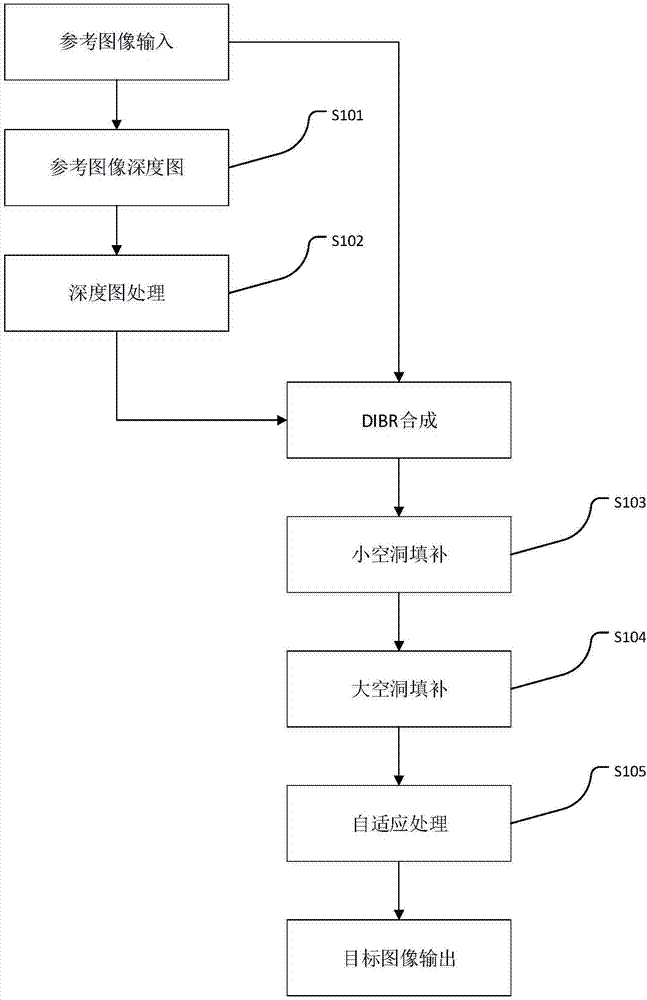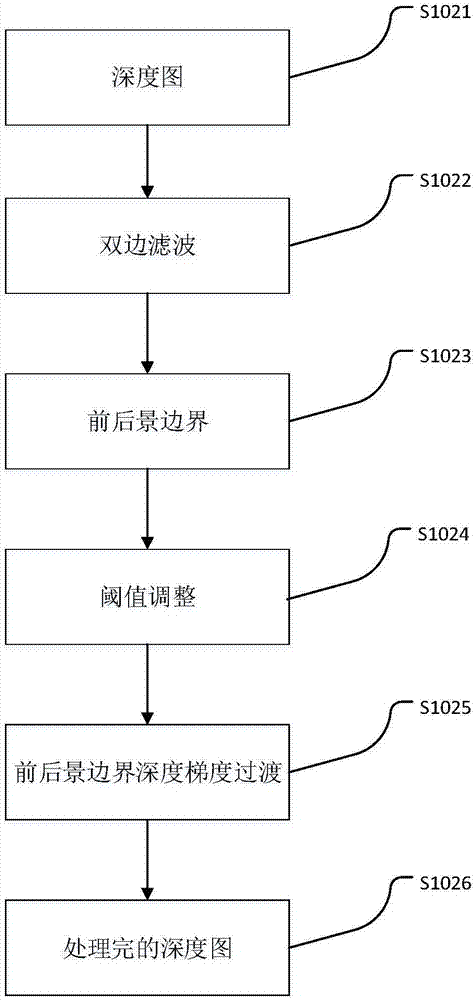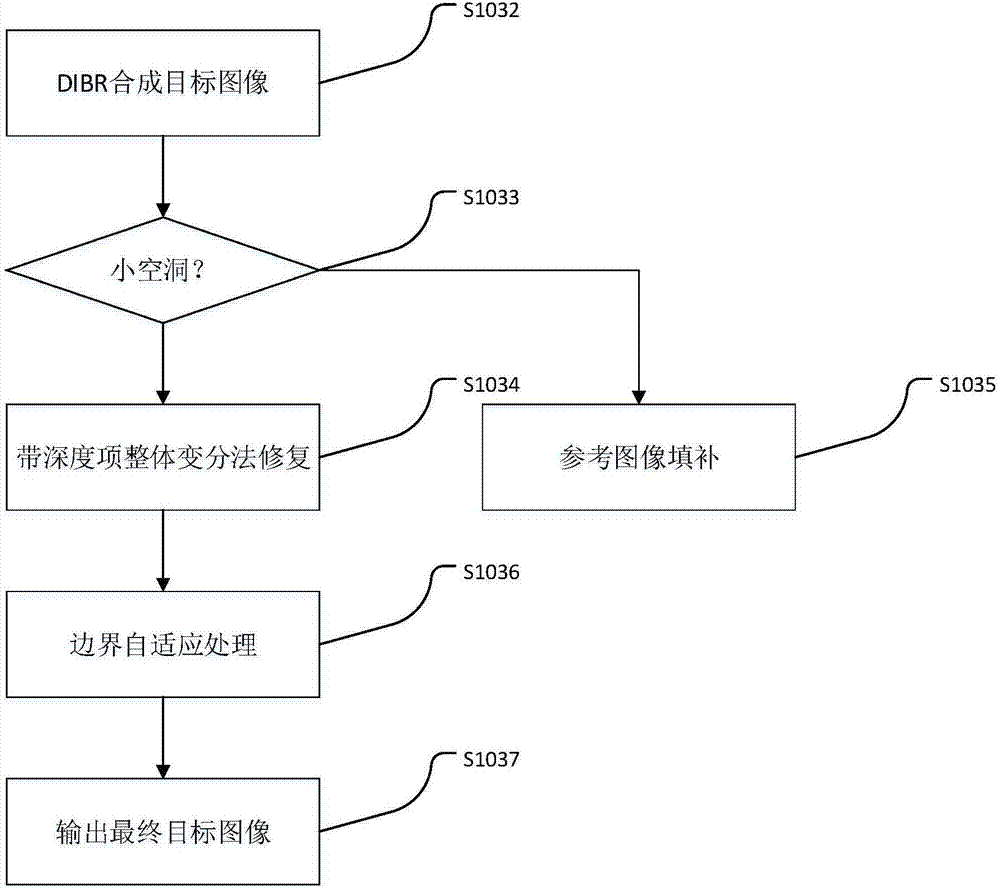Hole filling algorithm based on depth transition and overall depth item variability
An overall variational and in-depth technology, applied in the field of 3D display, can solve problems such as complex and time-consuming algorithms, difficult hardware implementation, etc.
- Summary
- Abstract
- Description
- Claims
- Application Information
AI Technical Summary
Problems solved by technology
Method used
Image
Examples
Embodiment
[0067] The hole filling algorithm of the present invention is carried out step by step. Firstly, the depth map is preprocessed, and a bilateral filter processing algorithm is adopted here. Then find out the foreground and foreground boundaries that need to be transitioned in the depth map, and perform a gradual transition of the depth gradient on this boundary to reduce the hole in the boundary. Afterwards, the small holes in the synthesized target image are repaired by using the global variational algorithm with depth term. Then deal with the large void at the boundary. Finally, an adaptive method is adopted to assign appropriate weights to the boundary synthesis.
[0068] figure 1 It is a schematic flowchart of a hole filling algorithm according to an embodiment of the present invention. like figure 1 The shown hole filling algorithm includes the following steps:
[0069] Step S101 inputting a reference image to obtain a depth map;
[0070] Step S102 processes the dept...
PUM
 Login to View More
Login to View More Abstract
Description
Claims
Application Information
 Login to View More
Login to View More - R&D
- Intellectual Property
- Life Sciences
- Materials
- Tech Scout
- Unparalleled Data Quality
- Higher Quality Content
- 60% Fewer Hallucinations
Browse by: Latest US Patents, China's latest patents, Technical Efficacy Thesaurus, Application Domain, Technology Topic, Popular Technical Reports.
© 2025 PatSnap. All rights reserved.Legal|Privacy policy|Modern Slavery Act Transparency Statement|Sitemap|About US| Contact US: help@patsnap.com



